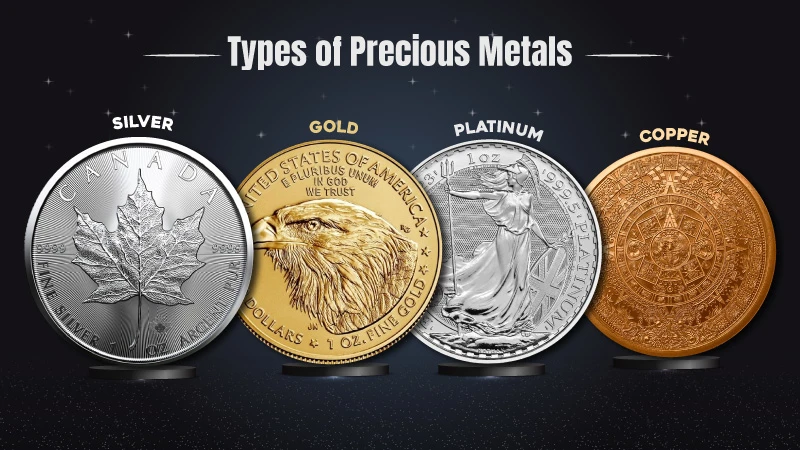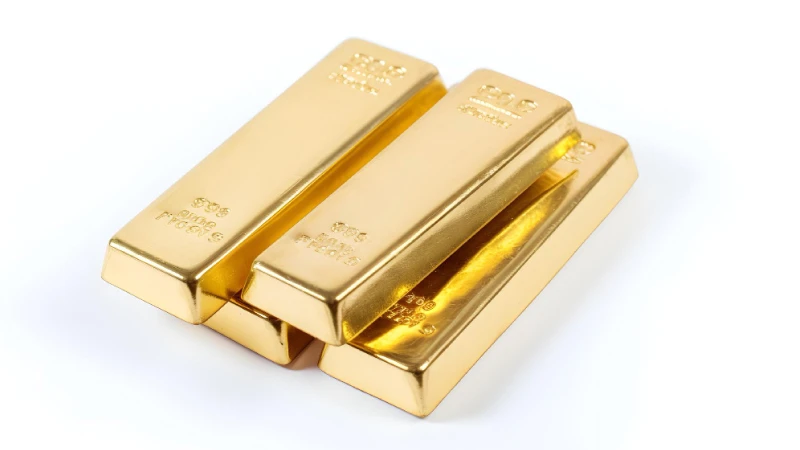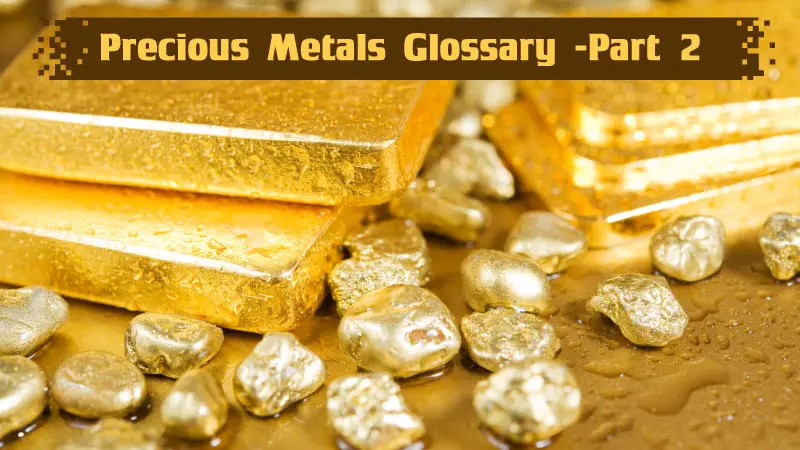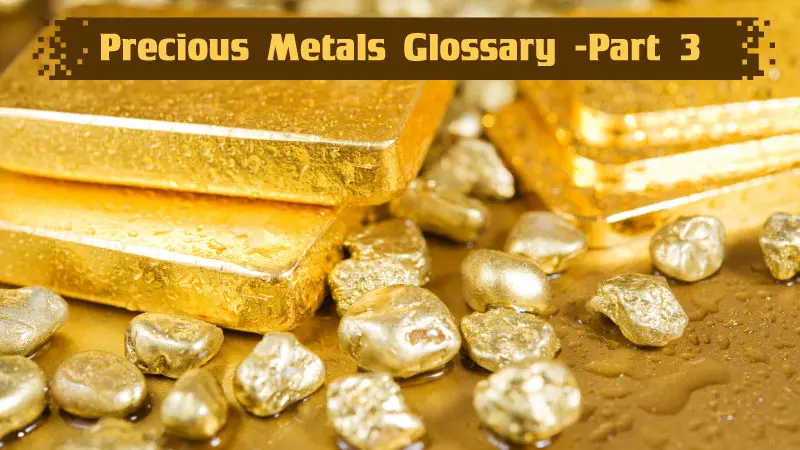Understanding the Different Types of Precious Metals
In the annals of human history, few elements have captured our imagination and fueled our economies, as have the precious metals. For millennia, they have been the bedrock of empires, the foundation of global trade systems, and the muse for countless artisans. Today, these metals are not just symbols of luxury; they are strategic assets, driving modern industries while providing a hedge against the unpredictable economic landscape.
If you're contemplating the tangible allure of physical metal investments, understanding the essence of these metals is paramount. Let's dive deeper.
What are Precious Metals?
Precious metals are naturally occurring, rare metals with extraordinary economic value. They are in great demand because of their rarity, historical significance, and wide range of uses. The most well-known are gold, silver, platinum, and palladium.
These metals have different properties, such as luster, ductility, and corrosion resistance. They are less reactive than other elements, distinguishing them from base metals and attracting higher costs. While they were formerly used as cash, they are now employed as investments, industrial catalysts, and jewelry, electronics, and medicine components.
Furthermore, they have cultural and symbolic significance across the globe; gold represents riches and power, silver represents purity and elegance, platinum represents rarity and durability, and palladium represents innovation and sustainability.
Investors respect precious metals for their usefulness as an inflation hedge and portfolio diversifier. You can buy all these valuable metals at BOLD Precious Metals at the best prices.
Other precious metals, such as rhodium and iridium, exist, but they carry more significant risks owing to limited real-world uses and availability. Incorporating these metals into sophisticated electronics has increased interest in them, highlighting their lasting importance in contemporary life.
History of Precious Metals
Precious metals such as gold, silver, platinum, and others have grown through time into globally valued and costly articles. Because of its corrosion resistance, gold became an early emblem of authority and immortality among ancient cultures. Around 3600 BC, Egyptians started smelting it for jewelry. King Croesus of Lydia produced the first standardized gold coins in 564 B.C., establishing the groundwork for contemporary bullion.
Silver, one of the first metals utilized by humanity, skyrocketed in value after its widespread discovery in South America in 1492 A.D. Platinum was first detected as an element in 1751 A.D. Still, it took a long time to evolve into platinum bullion coins, which became popular in 1988. The name "dollar" derives from the Dutch "daalder" of 1614.
Precious metals are used in jewelry, investments, electronics, and vehicles nowadays. The United States produced 170 metric tons of gold and approximately 1,000 metric tons of silver last year, dwarfed by Mexico and China. Precious metals retain their value and demand, with BOLD Precious Metals providing these historic assets at a reasonable price.
These metals, including gold and silver, are valued for their monetary and economic use and their historical importance. The historical links of gold to monarchy and divinity, silver's function in commerce and adornment, platinum's recent discovery, palladium's practicality, and the peculiar features of ruthenium, rhodium, osmium, and iridium all add to precious metals' lasting fascination throughout history.
Types of Precious Metals
1) Gold
Gold, frequently referred to as the "metal of kings," has a unique and long history in human history. It has been used for jewelry and coinage for millennia because of its beauty, malleability, and resistance to tarnish.
The remarkable conductivity of gold is now used in modern electronics, satellite systems, and medicinal treatments. Despite its worldwide presence, gold is a limited resource in great demand due to its scarcity.
2) Silver
Silver, with its luminous attractiveness, is used not just in jewelry but also has exceptional conductivity, reflection, and antimicrobial characteristics. It contributes significantly to renewable energy via solar panels and water filtration. Silver remains in high demand despite being more common than gold due to its industrial uses.
3) Platinum
Because of its density, corrosion resistance, and high melting point, platinum is vital in sectors such as vehicles, medicine, and electronics. Platinum is used in catalytic converters, cancer therapies, and sophisticated technologies.
4) Palladium
Palladium was discovered in 1803 and is primarily utilized in catalytic converters, although it also has uses in electronics, dentistry, and fuel cells. Its scarcity and growing utility make it precious.
5) Copper
Though often overshadowed, copper finds wide-ranging industrial, manufacturing, and decorative uses. Like other precious metals, its increasing demand and limited supply attract investors seeking to hedge against currency devaluation.
Supply and demand dynamics, geopolitical uncertainty, and technological breakthroughs influence these precious metals prices. During economic uncertainty, gold and silver are considered safe havens, but platinum and palladium provide unique investment possibilities because of their industrial importance and supply limits.
Investing in precious metals has numerous significant benefits:
-
Inflation Resistance: Precious metals have inherent worth and are not affected by monetary inflation. Unlike fiat currencies, they are protected against inflationary devaluation due to a limited supply.
-
Tangible Assets: Precious metals have intrinsic value beyond investments. They are used for various reasons, including jewelry, industrial uses, medical, and art. They are stable assets because of their long history as repositories of value and means of exchange.
-
Liquidity: Precious metals are reasonably liquid assets that can be converted to cash quickly. All these options can also include exchange-traded funds (ETFs), sovereign gold bonds (SGBs), commodities exchanges, mutual funds, and tangible metals. Yet, tangible metals are best to hold as, for centuries, precious metals have functioned as both valuable assets and mediums of exchange. They've also symbolized wealth, power, beauty, and prestige in various societies, adding emotional and sentimental value. Investors should investigate the benefits, risks, and returns of each option.
-
Risk Mitigation: Precious metals safeguard against market risk and efficiently diversify portfolios. They have a low or negative correlation with other asset types, which reduces total portfolio volatility. During economic instability, geopolitical turmoil, or violence, they often serve as safe havens, preserving capital.
Investing in precious metals is an intelligent strategy for diversification, wealth protection, and hedging against economic volatility. These physical assets last as dependable repositories of wealth and serve as a buffer against numerous financial dangers. Optimizing returns and portfolio stability requires careful investment alternatives and risk tolerance analysis.
Summary
BOLD Precious Metals offers a variety of bullion products from reputable mints worldwide if you are looking to collect or invest in precious metals. We also provide the best deals and discounts to our valued customers.
When discussing precious metals, it is essential to remember that it is not only about the current market price or profit from owning it; it is also about the centuries-old history. These metals also have their sentimental values.
When you purchase American Eagle coins, you encourage the American spirit and liberty. Collectible coins, such as the Lunar, are the ideal commemorative coins for celebrating the year 2023 and so on. Investing in silver, gold, or platinum bullion protects your holdings from market volatility.
So, what are your thoughts on these metals? Are they only material possessions or emotions for you? We'd love to hear your thoughts. Read on to learn more about how these metals have kept their appeal over time.






